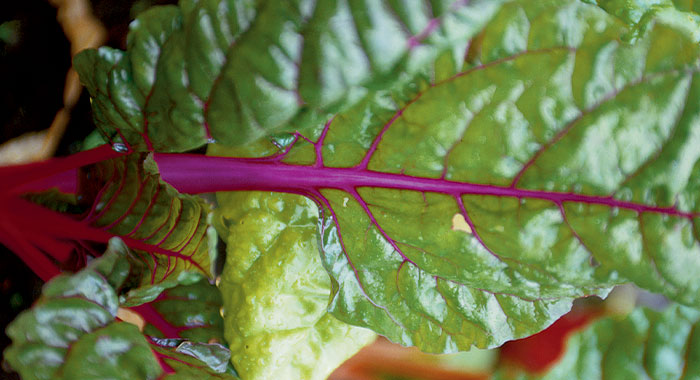
Pronounce it: swiss shard
Also known as plain chard, Swiss chard has large, fleshy, tender, deep green leaves and thick, crisp stalks. Although they’re unrelated, chard is similar to spinach, but with a stronger, more assertive (or, as some think, bitter) flavour.
Different types of chard have different coloured stalks and ribs – some are white, some are a golden-orange and some are red (called ruby or rhubarb chard); there’s even rainbow chard. There’s very little difference in taste, but ruby and rhubarb chard can have a slightly stronger flavour.
Take a look at our chard recipe collection for some creative cooking inspiration.
Availability
All year round, but best from July through to early November.
Choose the best
Go for leaves that are bright green and fresh-looking, with no brown discolouration. Stems should be firm. Unlike many vegetables, larger Swiss chard leaves aren’t necessarily tougher than smaller ones.
How to prepare Swiss chard
The leaves and stalks should be cooked separately. Wash then cut the stalks from the leaves and leave whole or chop, as required. On some older leaves you may need to cut out the ribs, too. Leaves can be left whole or chopped, as required.
How to store Swiss chard
In a perforated bag in the fridge, for up to four days.
How to cook Swiss chard
- Leaves: boil (1-2 minutes); steam (3-4 minutes).
- Stems: stir-fry (around 2 minutes); boil (3-4 minutes); steam (4-5 minutes); roast (10 minutes).
Alternatives
Try spinach.
Be the first to comment on "Swiss chard"